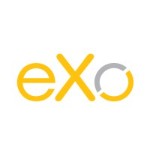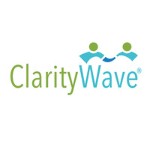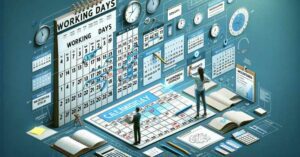What is an employee rewards programs ? Employee rewards programs incentivize performance by offering benefits like bonuses, gifts, or recognition to boost morale and retention.
Employee rewards programs have become a popular way for companies to boost employee engagement and morale. These employee rewards programs offer a variety of incentives to employees who meet certain performance goals or milestones. While the specifics of these programs can vary widely, they all share the goal of motivating employees to perform at their best.

Understanding Employee Rewards Programs is an important first step in developing an effective strategy. These employee rewards programs can take many forms, from simple recognition programs to complex incentive structures that incorporate both financial and non-financial rewards. Companies must carefully consider their goals and the needs of their employees when designing a rewards program.
Developing a Rewards Strategy requires a thoughtful approach that takes into account the unique needs and goals of the organization. Companies must consider factors such as budget, employee preferences, and company culture when designing a program. Effective employee rewards programs can help boost employee engagement and morale, leading to increased productivity and better business outcomes. Companies that take the time to design a thoughtful rewards program are more likely to see positive results.
Key Takeaways
- Understanding Employee Rewards Programs is essential for developing an effective strategy.
- Developing a Rewards Strategy requires a thoughtful approach that takes into account the unique needs and goals of the organization.
- An effective employee rewards programs can help boost employee engagement and morale, leading to increased productivity and better business outcomes.
Understanding Employee Rewards Programs
Employee rewards programs are a crucial aspect of any company’s strategy to retain and motivate employees. These programs are designed to reward employees for their hard work and dedication, and they come in many different forms. Understanding the different types of rewards, benefits of effective reward systems, and key components of a reward program is essential for any organization looking to implement a successful employee rewards programs.
Types of Rewards
Rewards can be categorized into two main categories: monetary and non-monetary rewards. Monetary rewards include bonuses, gift cards, and cash incentives. Non-monetary rewards, on the other hand, include tangible rewards such as merchandise, experiences, and employee recognition.
Benefits of Effective Reward Systems
Effective reward systems have several benefits for both employees and employers. For employees, rewards help to increase job satisfaction, motivation, and loyalty. For employers, rewards help to improve employee retention, productivity, and overall performance. Additionally, effective reward systems can help to create a positive work culture and improve employee morale.
Key Components of a Reward Program
A successful reward program should have several key components. These include clear goals and objectives, a fair and transparent reward system, regular communication with employees, and a focus on employee engagement. By implementing these components, companies can create a reward program that is effective in motivating and retaining their employees.
To learn more about employee rewards programs, check out this link from the Society for Human Resource Management.
Developing a Rewards Strategy
When it comes to developing an effective employee rewards programs, it’s important to have a clear strategy in place. This section will explore some key considerations when developing a rewards strategy, including aligning rewards with company values, setting clear objectives and performance goals, and budget considerations for reward programs.
Aligning Rewards with Company Values
One of the most important considerations when developing employee rewards programs is to ensure that it aligns with the company’s core values. This means that rewards should be designed to reinforce behaviors and actions that are in line with the company’s mission and vision. For example, if a company values teamwork, then rewards should be given to individuals or teams who demonstrate exceptional collaboration and cooperation.
Setting Clear Objectives and Performance Goals
Another important consideration is to set clear objectives and performance goals for the employee rewards programs. This means that the company should identify specific behaviors or outcomes that it wants to encourage, and then design rewards that are aligned with those goals. For example, if a company wants to increase sales, it might offer bonuses or other incentives to employees who meet or exceed specific sales targets.
Budget Considerations for Reward Programs
Finally, it’s important to consider the budget when developing employee rewards programs. Companies need to ensure that they are allocating resources effectively and that the employee rewards programs are sustainable over the long term. This means that companies should consider factors such as the cost of rewards, the number of employees who will be eligible for rewards, and the overall impact of the employee rewards programs on the company’s bottom line.
To learn more about developing a rewards strategy, check out this resource from the Society for Human Resource Management.
Reward Program Implementation
Implementing a successful employee rewards programs requires careful planning and execution. In this section, we will explore three key aspects of implementing a rewards program: communication and promotion, training managers and leaders, and monitoring and adjusting the program.
Communication and Promotion
Clear communication and effective promotion are essential to the success of any rewards program. HR departments should work closely with managers and leaders to ensure that employees are aware of the program and understand how it works. This can be achieved through a variety of channels, including emails, newsletters, and company-wide meetings.
One effective way to promote the program is to highlight success stories and showcase the rewards that employees have earned. This can encourage other employees to participate and increase engagement with the program. HR departments can also use social media and other digital platforms to promote the program and encourage participation.
Training Managers and Leaders
Managers and leaders play a crucial role in the success of a rewards program. They need to understand the program’s objectives, how it works, and how to communicate it to their teams. HR departments should provide training and support to managers and leaders to ensure that they are equipped with the knowledge and skills they need to effectively promote and administer the program.
Training should also focus on how to provide meaningful feedback to employees and how to recognize and reward their achievements. Managers and leaders should be encouraged to recognize and reward employees regularly, not just when they reach a specific milestone.
Monitoring and Adjusting the Program
Monitoring and adjusting the employee rewards programs is essential to ensure its ongoing success. HR departments should regularly review program data to identify areas that are working well and areas that need improvement. This can help to fine-tune the program and ensure that it remains relevant and effective.
Employee feedback is also essential to the success of the program. HR departments should encourage employees to provide feedback on the program and use this feedback to make improvements. This can help to increase engagement and ensure that the program meets the needs of employees.
In conclusion, implementing a successful employee rewards programs requires careful planning, effective communication, and ongoing monitoring and adjustment. By following these guidelines, HR departments can create a program that is engaging, effective, and rewarding for employees. For more information on implementing a rewards program, visit this link to a resource with high authority on the topic.
Recognition and Rewards in Action

Employee recognition programs are becoming increasingly popular in the workplace, as they have been shown to boost morale, increase productivity, and improve employee retention rates. In this section, we will explore some of the ways in which recognition and rewards can be implemented in the workplace, and the benefits that they can bring.
Public vs. Private Recognition
Public recognition is a great way to show employees that their hard work is appreciated and valued by the company. This can take many forms, such as announcing an employee of the month, celebrating team achievements, or recognizing work anniversaries. Public recognition can be done at company-wide meetings, through internal newsletters, or on social media.
On the other hand, private recognition can also be effective, especially for employees who prefer to keep their accomplishments more low-key. Private recognition can take the form of a personal note or email from a manager, a one-on-one meeting to discuss achievements, or a small gift or bonus.
Peer-to-Peer Recognition
Peer recognition is another effective way to show employees that their hard work is valued. This can take the form of a peer-to-peer recognition program, where employees can nominate their colleagues for awards or recognition. This not only boosts morale, but also encourages teamwork and collaboration.
Celebrating Milestones and Achievements
Celebrating milestones and achievements is also an important part of recognition and rewards programs. This can include celebrating work anniversaries, birthdays, or major accomplishments. This not only shows employees that their hard work is valued, but also helps to create a positive and supportive work environment.
Overall, recognition and rewards programs can have a significant impact on employee morale, productivity, and retention rates. By implementing a variety of recognition and rewards strategies, companies can create a positive and supportive work environment that encourages employees to do their best work.
To learn more about employee recognition and rewards programs, check out this link from the Society for Human Resource Management.
Measuring the Impact of Rewards Programs

Employee rewards programs are a valuable tool for companies to motivate and retain their employees. However, measuring the impact of these programs can be challenging. In this section, we will explore some ways to measure the effectiveness of rewards programs.
Tracking Employee Engagement and Morale
One way to measure the impact of rewards programs is to track employee engagement and morale. Engaged employees are more productive and have a higher level of job satisfaction, which can lead to increased profits and employee retention. Measuring engagement can be done through surveys, focus groups, or one-on-one interviews. By tracking engagement levels before and after implementing a rewards program, companies can see if the program has had a positive impact on employee engagement and morale.
Assessing Program ROI
Another way to measure the impact of rewards programs is to assess the return on investment (ROI). Companies can calculate the ROI by comparing the cost of the rewards program to the benefits it provides. Benefits can include increased productivity, reduced turnover, and higher profits. By calculating the ROI, companies can determine if the rewards program is cost-effective and if it is worth continuing.
Feedback and Continuous Improvement
Collecting employee feedback is essential for measuring the effectiveness of rewards programs. Employees can provide valuable insights into what rewards they find motivating and what they do not. Companies can use this feedback to make changes to the rewards program to better meet the needs of their employees. Continuous improvement is crucial for the long-term success of rewards programs.
To learn more about measuring the impact of rewards programs, check out this article from the Society for Human Resource Management.
Challenges and Best Practices

Avoiding Common Pitfalls
Implementing employee rewards programs can be a complex process, and there are several common pitfalls that companies should be aware of. One of the most common mistakes is failing to clearly define the goals of the program. Without clear goals, it can be difficult to measure the success of the program and ensure that it is aligned with the company’s overall objectives.
Another common pitfall is failing to communicate the program effectively to employees. It is important to clearly explain the program’s benefits and how employees can participate. This can help to increase engagement and participation in the program.
Inclusive and Equitable Rewarding
When designing employee rewards programs, it is important to ensure that it is inclusive and equitable. This means that the program should be accessible to all employees, regardless of their background or position within the company. It is also important to ensure that the rewards are distributed fairly, based on objective criteria.
To achieve this, companies should consider using a variety of rewards that appeal to different employees. For example, some employees may prefer monetary rewards, while others may prefer non-monetary rewards such as extra time off or flexible working arrangements.
Legal and Ethical Considerations
When designing an employee rewards program, companies must also consider legal and ethical considerations. For example, it is important to ensure that the program complies with relevant employment laws and regulations. This includes ensuring that the rewards are not discriminatory and that they are offered on a voluntary basis.
Companies must also consider ethical considerations, such as ensuring that the rewards are aligned with the company’s values and culture. This can help to ensure that the program is perceived as fair and transparent by employees.
To ensure that the program is legally and ethically sound, companies should consider seeking advice from legal and HR professionals. They can provide guidance on best practices and help to ensure that the program is compliant with relevant laws and regulations.
Overall, designing an effective employee rewards program requires careful consideration of a range of factors, including culture, engagement, equity, legal and ethical considerations, diversity, and fairness. By avoiding common pitfalls and following best practices, companies can create a program that is effective, inclusive, and sustainable.
Here is a resource with more information on designing employee rewards programs.
The Future of Employee Rewards

As the workforce continues to evolve, so do employee rewards programs. Companies are constantly looking for ways to keep their employees engaged, motivated, and satisfied. Here are some trends and ideas that are shaping the future of employee rewards.
Innovative Reward Ideas
Innovation is key when it comes to employee rewards. Offering unique and personalized rewards can make employees feel valued and appreciated. For example, some companies are offering experiential rewards like travel vouchers, concert tickets, or cooking classes. Others are offering wellness rewards, such as gym memberships or healthy meal delivery services.
Integrating Technology in Rewards Programs
Technology is becoming increasingly important in the workplace, and rewards programs are no exception. Companies are using technology to make rewards programs more efficient and effective. For example, some are using gamification to make rewards more engaging. Others are using data analytics to track employee performance and tailor rewards accordingly.
Adapting to a Changing Workforce
The workforce is becoming more diverse and flexible. Companies need to adapt their rewards programs to meet the needs of different employees. For example, offering flexible work arrangements or remote work options can be a valuable reward for some employees. Companies may also need to consider offering rewards that are more inclusive, such as language classes or cultural experiences.
Overall, the future of employee rewards program is about creating a positive employee experience. Companies that are able to offer innovative, personalized, and flexible rewards programs will be able to attract and retain top talent.
Here is a resource with more information on employee rewards programs.
Frequently Asked Questions

What are the key components of an effective employee rewards program?
An effective employee rewards program includes clear and measurable goals, a variety of incentives, and a system for tracking and rewarding employee progress. It should also be aligned with the company’s overall mission and values. According to Forbes, an effective rewards program should also be transparent and fair, with clear criteria for earning rewards.
How do I choose the right rewards and recognition platform for my company?
When choosing a rewards and recognition platform, it is important to consider factors such as ease of use, integration with other HR systems, and the types of rewards and incentives offered. According to HR Technologist, it is also important to consider the platform’s security features and data privacy policies.
What types of incentives are most appreciated by employees?
The types of incentives that are most appreciated by employees vary depending on the individual and the company culture. However, some popular incentives include flexible work arrangements, professional development opportunities, and recognition for a job well done. According to a survey by Gallup, employees also value non-monetary rewards such as public recognition, personalized thank-you notes, and opportunities to participate in company events.
What are some cost-effective rewards strategies for small businesses?
Small businesses may not have the budget for lavish rewards programs, but there are still many cost-effective strategies that can be used to motivate and engage employees. Some examples include offering flexible work arrangements, providing opportunities for professional development, and creating a culture of recognition and appreciation. According to Entrepreneur, small businesses can also leverage social media to recognize and promote employee achievements.
How can technology enhance the implementation of employee rewards programs?
Technology can play a key role in the implementation of employee rewards programs by providing a platform for tracking and managing rewards, as well as facilitating communication and collaboration among employees. According to SHRM, technology can also be used to personalize rewards and incentives based on individual employee preferences and performance.
What are the best practices for communicating and promoting an employee rewards program?
To ensure the success of an employee rewards program, it is important to communicate the program’s goals, incentives, and criteria clearly and consistently. According to Inc., it is also important to involve employees in the design and implementation of the program, and to provide regular updates and feedback on their progress. Finally, promoting the program through a variety of channels, such as email, social media, and company meetings, can help to increase employee engagement and participation.















